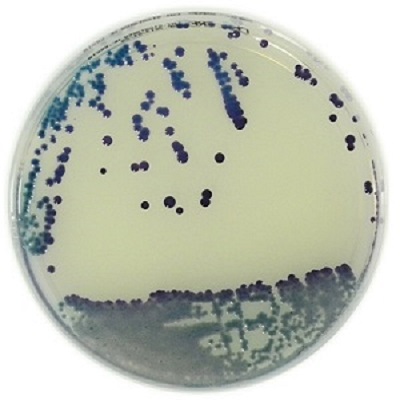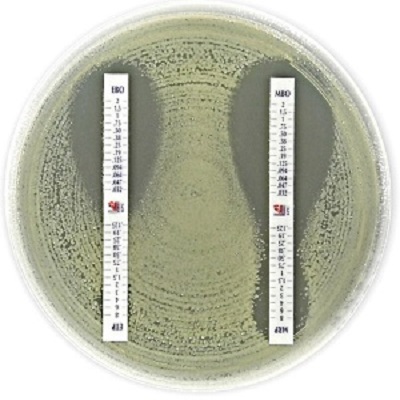Evaluation of a new method for detecting KPC-producing bacteria
Evaluation of a new method for detecting KPC-producing bacteria based on the combination of a screening medium and a gradient diffusion system
NTRODUCTION
Carbapenemes are commonly used to treat infections caused by multidrug-resistant Enterobacteriaceae. An increasing mechanism of carbapenem resistance is the Klebsiella pneumoniae carbapenemase (KPC).
The KPC ß-lactamase occurs most commonly in K. pneumoniae, but it has also been reported sporadically in other species of Enterobacteriaceae (Klebsiella oxytoca, Enterobacter spp., Escherichia coli, Salmonella spp., Citrobacter freundii and Serratia
spp.) and Pseudomonas aeruginosa.
The KPC enzyme confers resistance to all β-lactam agents including penicillins, cephalosporins, monobactams and most β-lactam/β-lactamase inhibitors.
KPC hydrolyzes the carbapenems (ertapenem, imipenem and meropenem) reducing their activity and poses a considerable threat to clinical patient care and public health.
OBJECTIVES
Laboratory identification of KPC-producing clinical isolates will be essential for limiting the spread of strains possessing this resistance mechanism.
We evaluated a new method for the detection of potential KPC producers using first Chromatic CRE for the screening and then MTS Ertapenem/Ertapenem+Boronic acid and Meropenem/Meropenem+Boronic acid for confirmation.
METHODS
Bacterial isolates: 91 bacterial isolates with known resistance mechanisms (acquired ampC, MBL, KPC and ESBL producing Enterobacteriaceae) determined by molecular methods were included in the study.
All the investigated isolates were frozen at -20°C and subcultured on Mueller Hinton Agar plates for two consecutive days prior using to ensure the purity of the culture.
Screening medium
Chromatic CRE (Liofilchem®, Italy) is used as a chromogenic medium designed to detect carbapenem-resistant Enterobacteriaceae.
All plates are incubated aerobically at 36+/-1°C, read after 18-24 h and interpreted according to manufacturers’ instructions.
Gradient diffusion system
MTS Ertapenem/Ertapenem+Boronic acid (Liofilchem®, Italy) is a double-sided gradient strip of Ertapenem 8-0.125 mg/L and Ertapenem 2-0.032 plus a constant level of Boronic acid.
MTS Meropenem/Meropenem+Boronic acid (Liofilchem®, Italy) is a double-sided gradient strip of Meropenem 8-0.125 mg/L and Meropenem 2-0.032 plus a constant level of Boronic acid.
All strips are inoculated on Mueller Hinton Agar (Liofilchem®, Italy). Interpretation of results was performed after 24 hours incubation.
All strains were tested on Chromatic CRE medium and with MTS Ertapenem/Ertapenem+Boronic acid and Meropenem/Meropenem+Boronic acid on Mueller Hinton Agar. Sensitivity and specificity were calculated.
RESULTS
KPC-producing K. pneumoniae grew uninhibited on Chromatic CRE and yielded green or blue colonies (100% sensitivity).
Poor growth/no growth/atypical colony color was evident with KPC-non producing Enterobacteriaceae (77% specificity).
MTS Ertapenem/Ertapenem+Boronic acid and MTS Meropenem/Meropenem+Boronic acid were evaluated with KPC positive and negative strains.
Both tests show 100% sensitivity and 89.3% specificity for MTS Ertapenem/Ertapenem+Boronic acid and 95.6 % specificity for MTS Meropenem/ Meropenem+Boronic acid, respectively.
CONCLUSION
The study demonstrates the efficiency of Chromatic CRE intended as a screening step of KPC producing strains, followed by MTS Ertapenem/Ertapenem+Boronic acid and MTS Meropenem/Meropenem+Boronic acid as subsequent confirmatory steps; this combination allows the rapid detection of carbapenem-resistant organisms and the immediate implementation of infection control measures avoiding the spread of carbapenem resistance.









